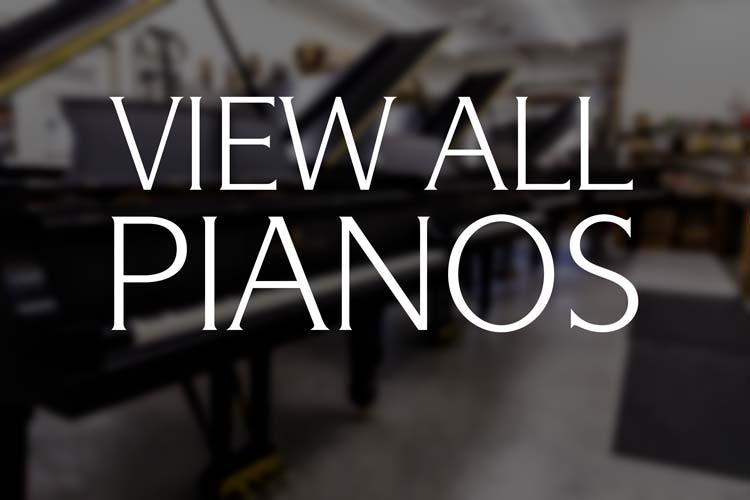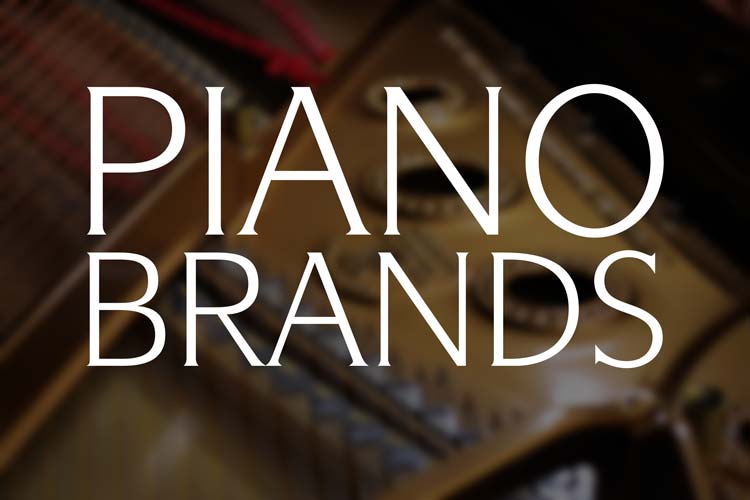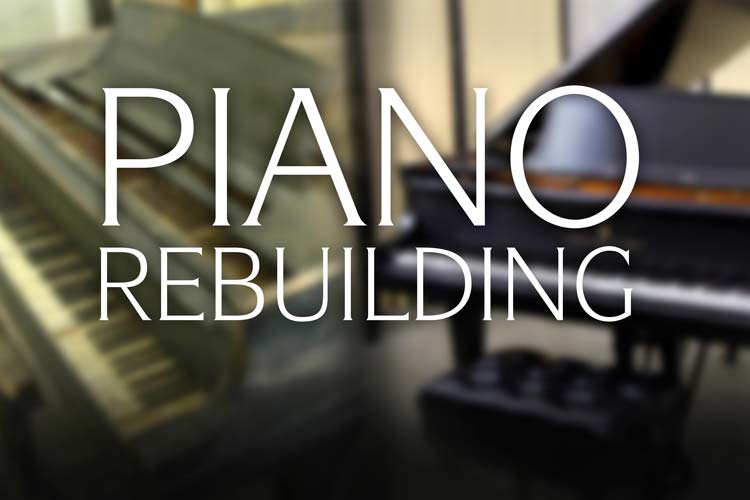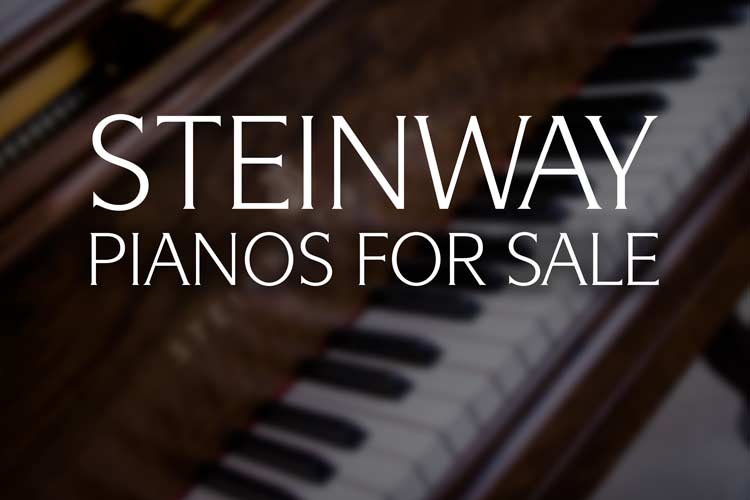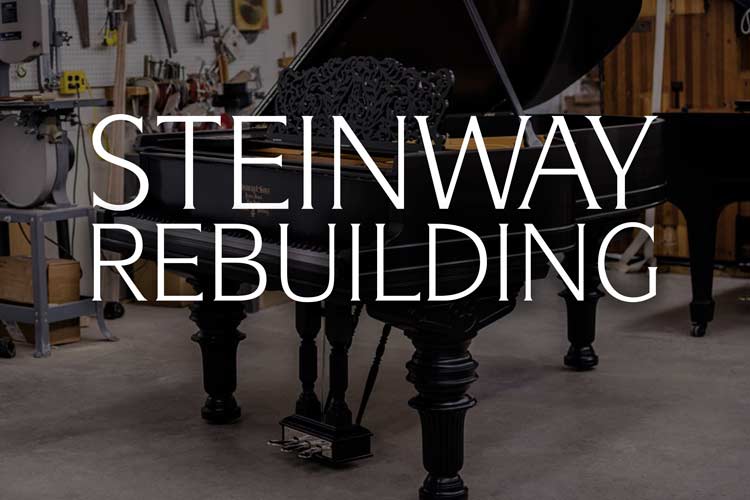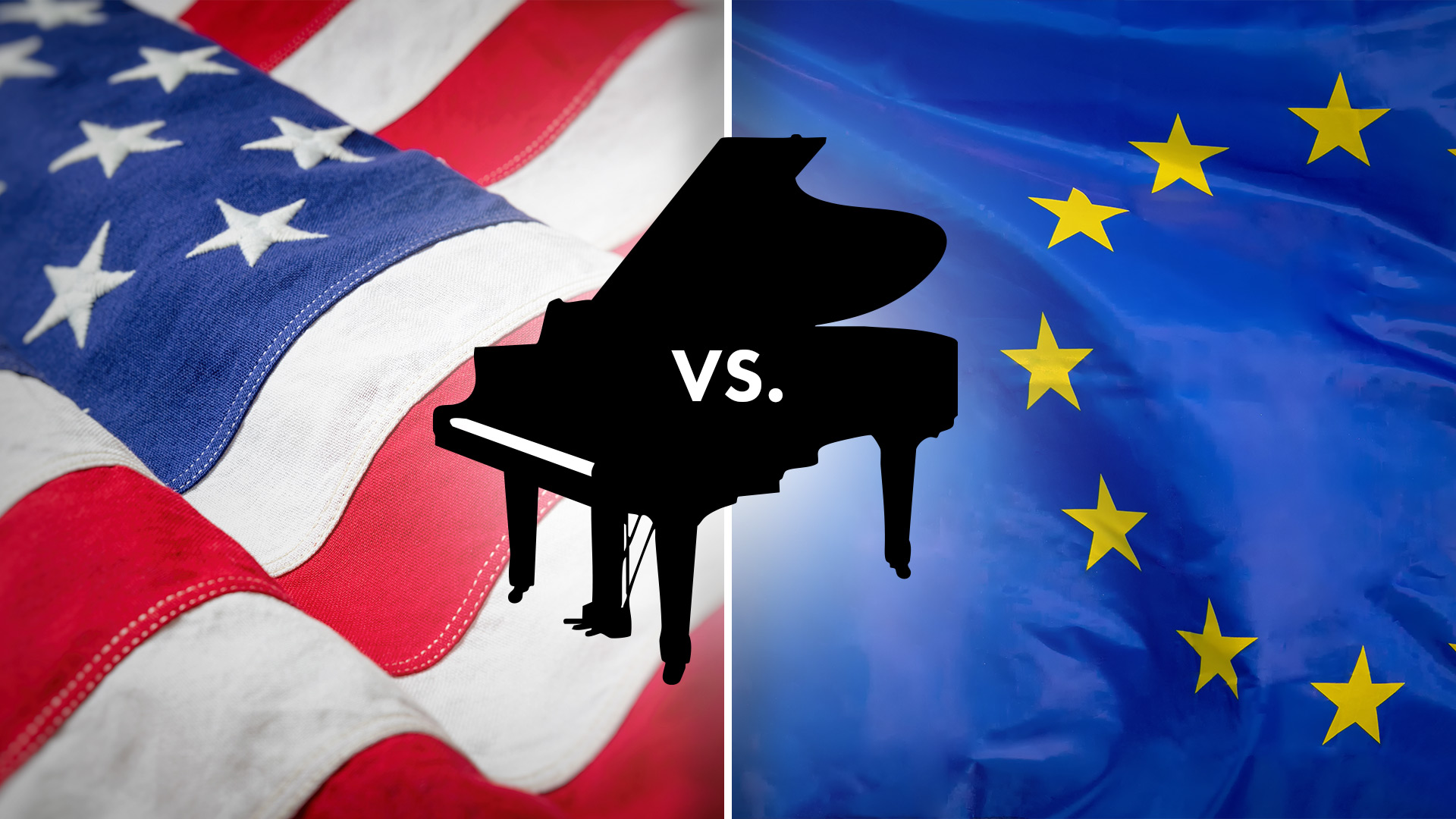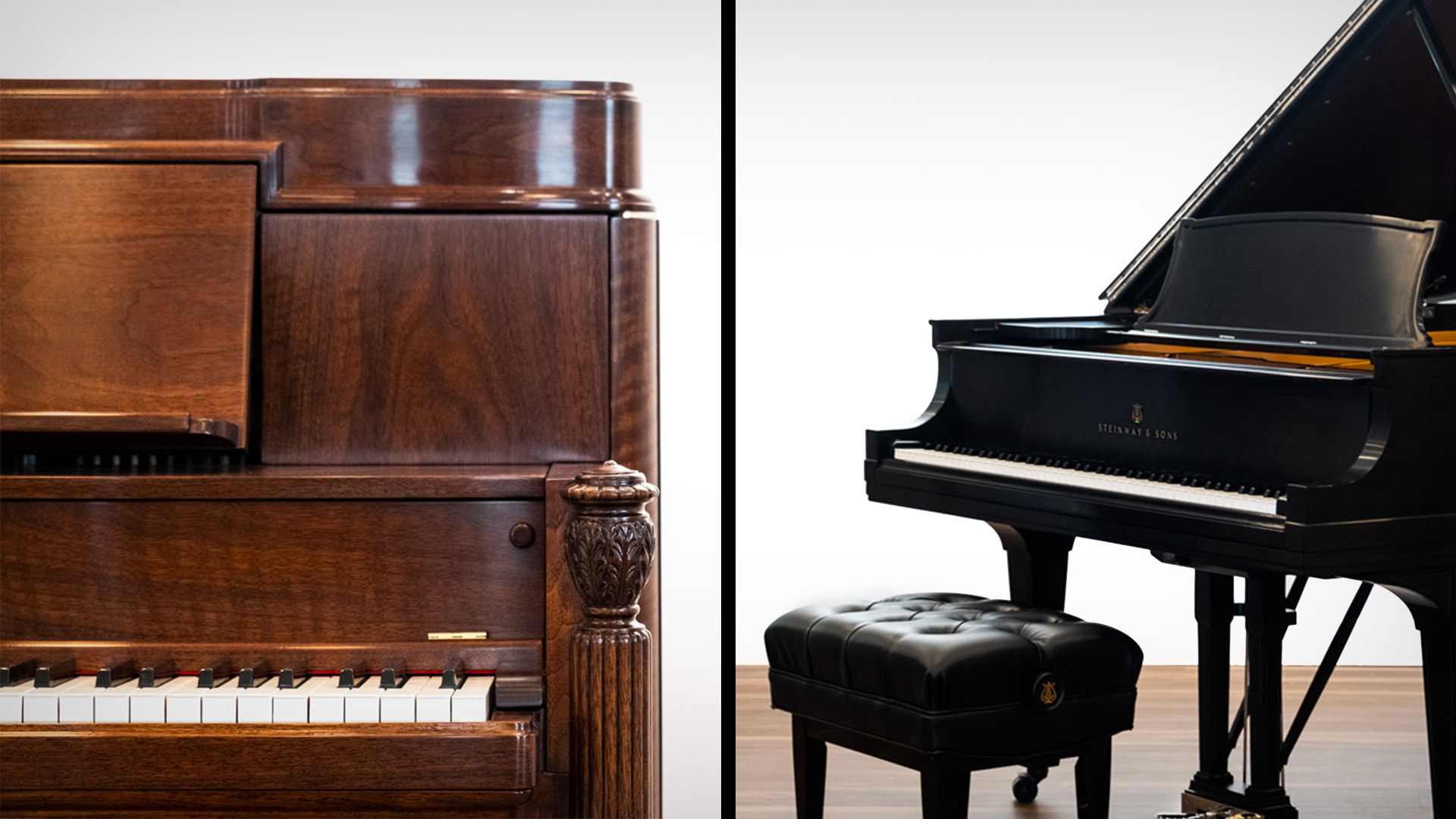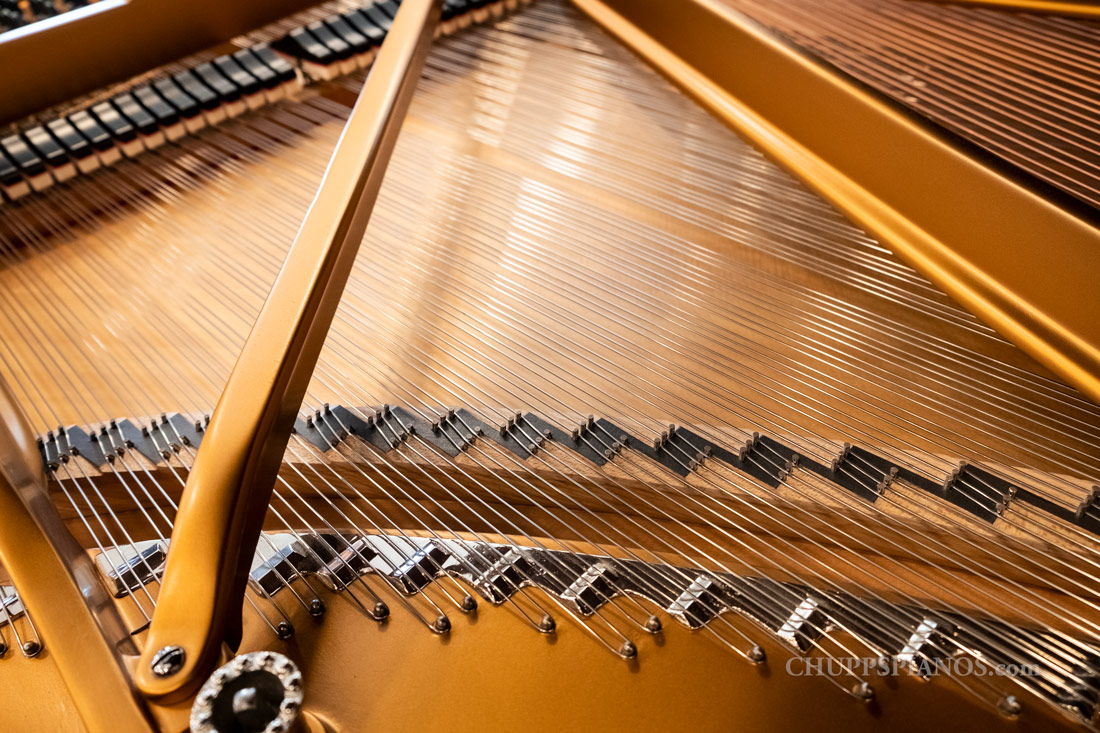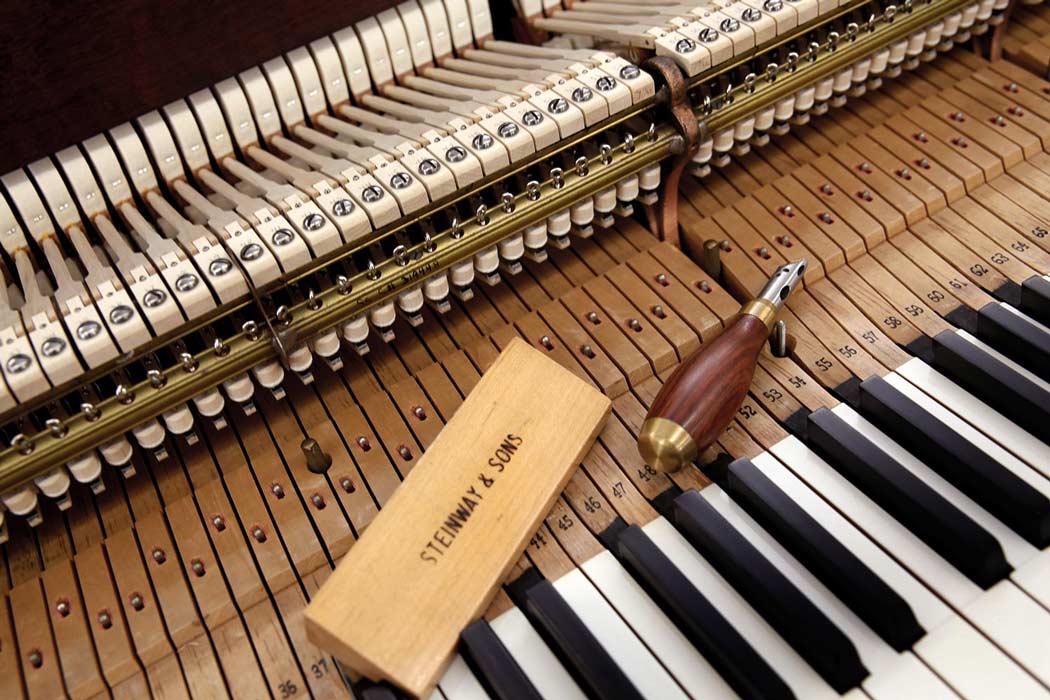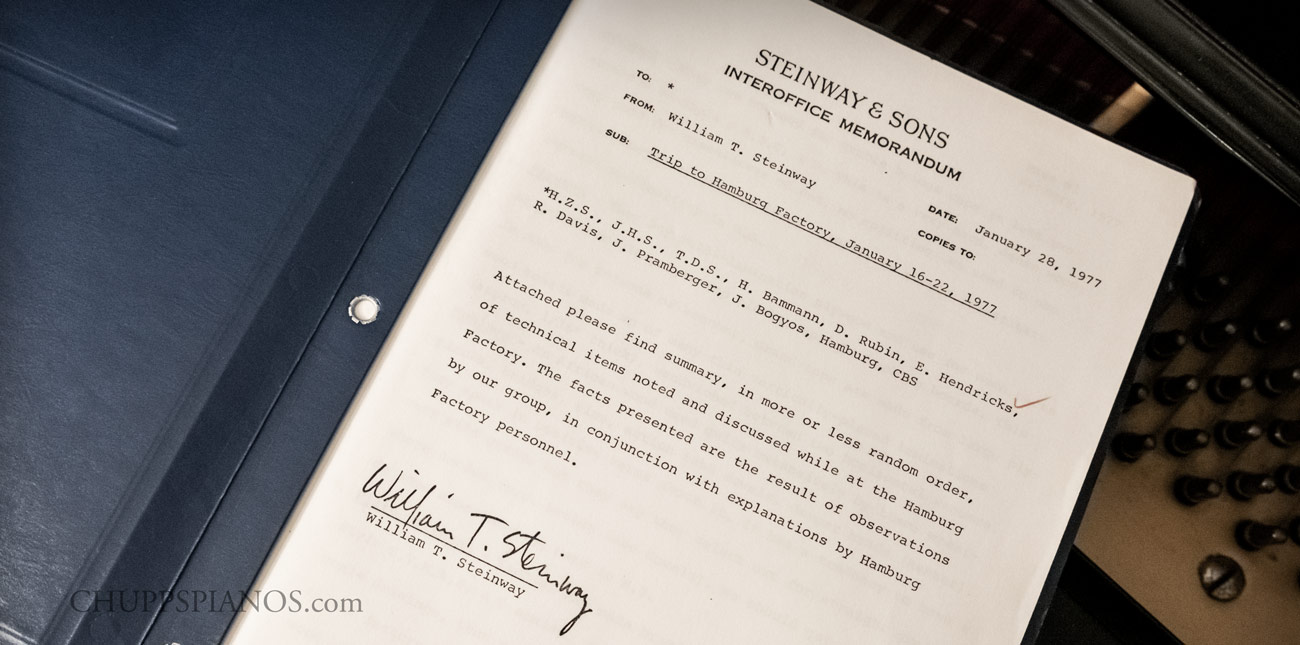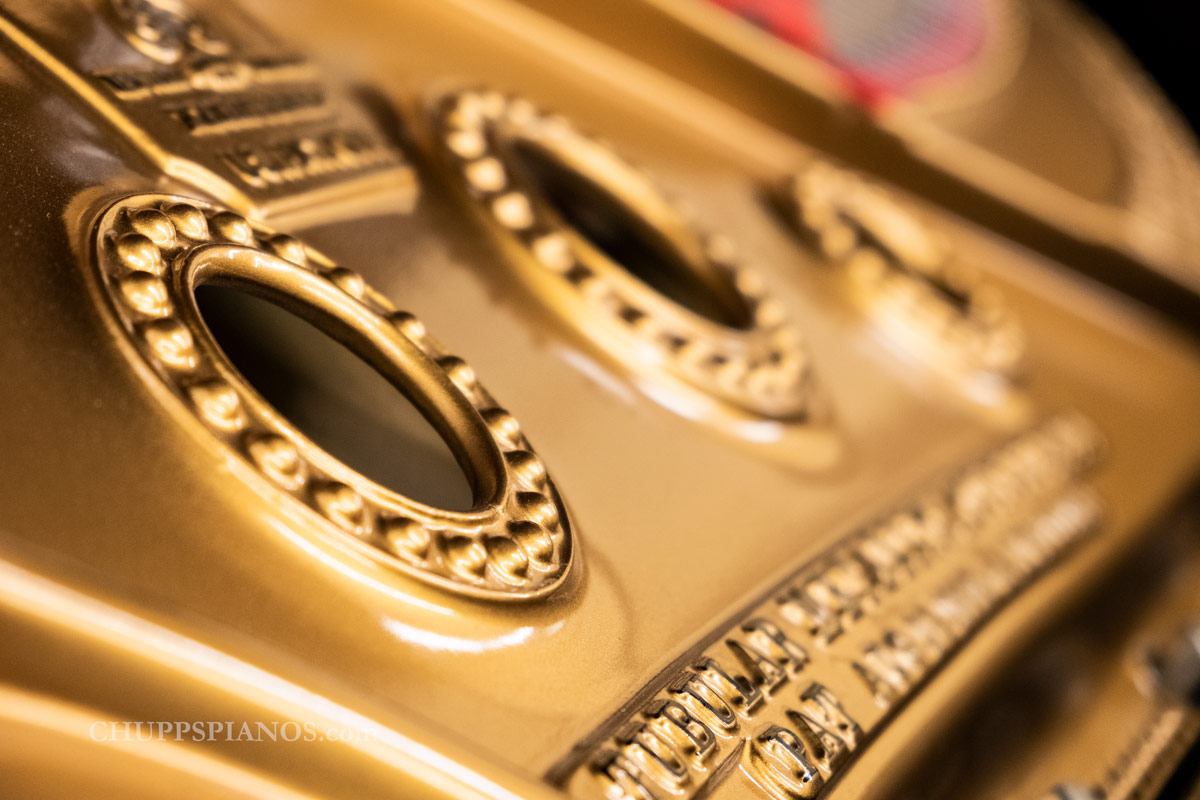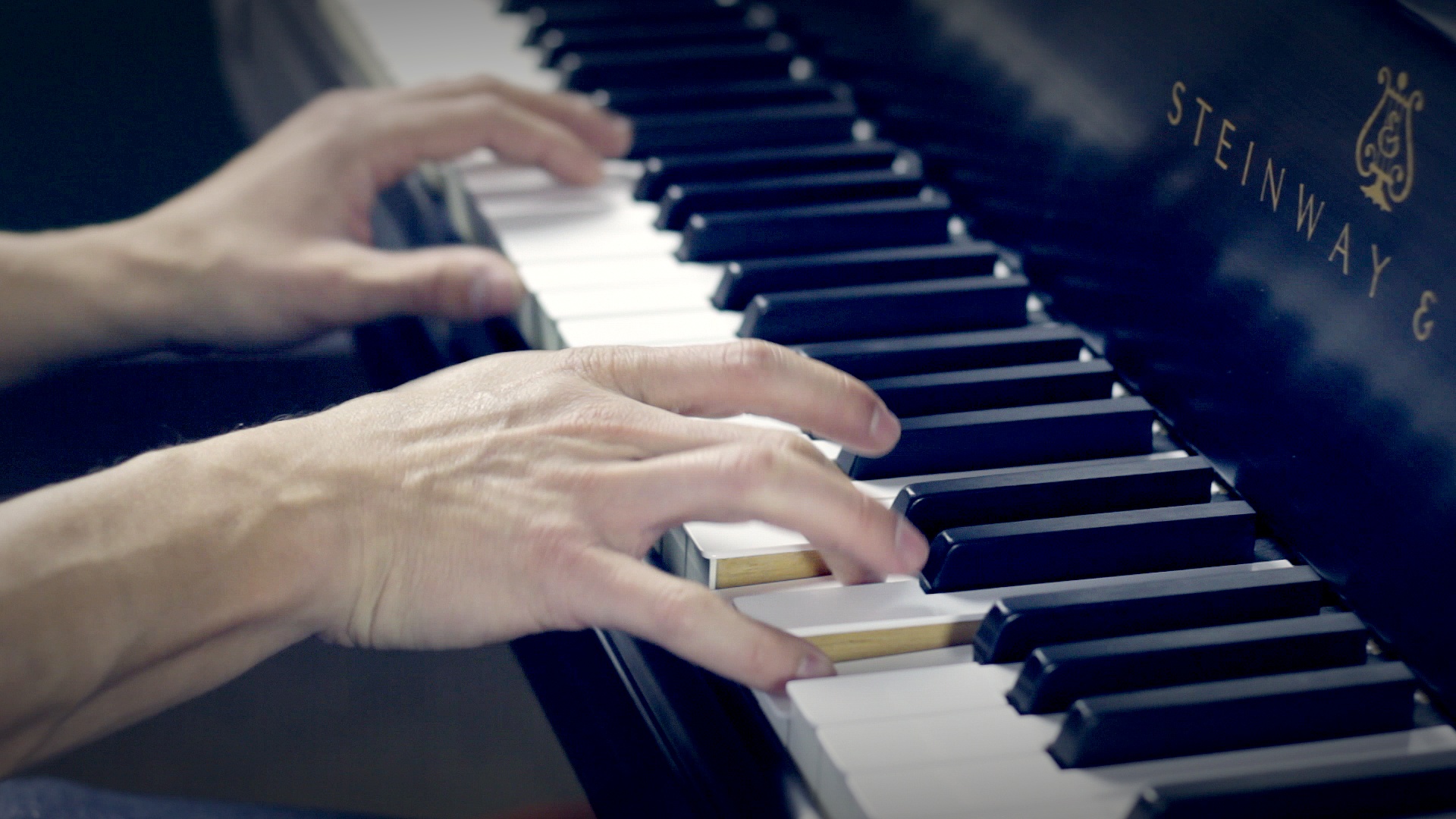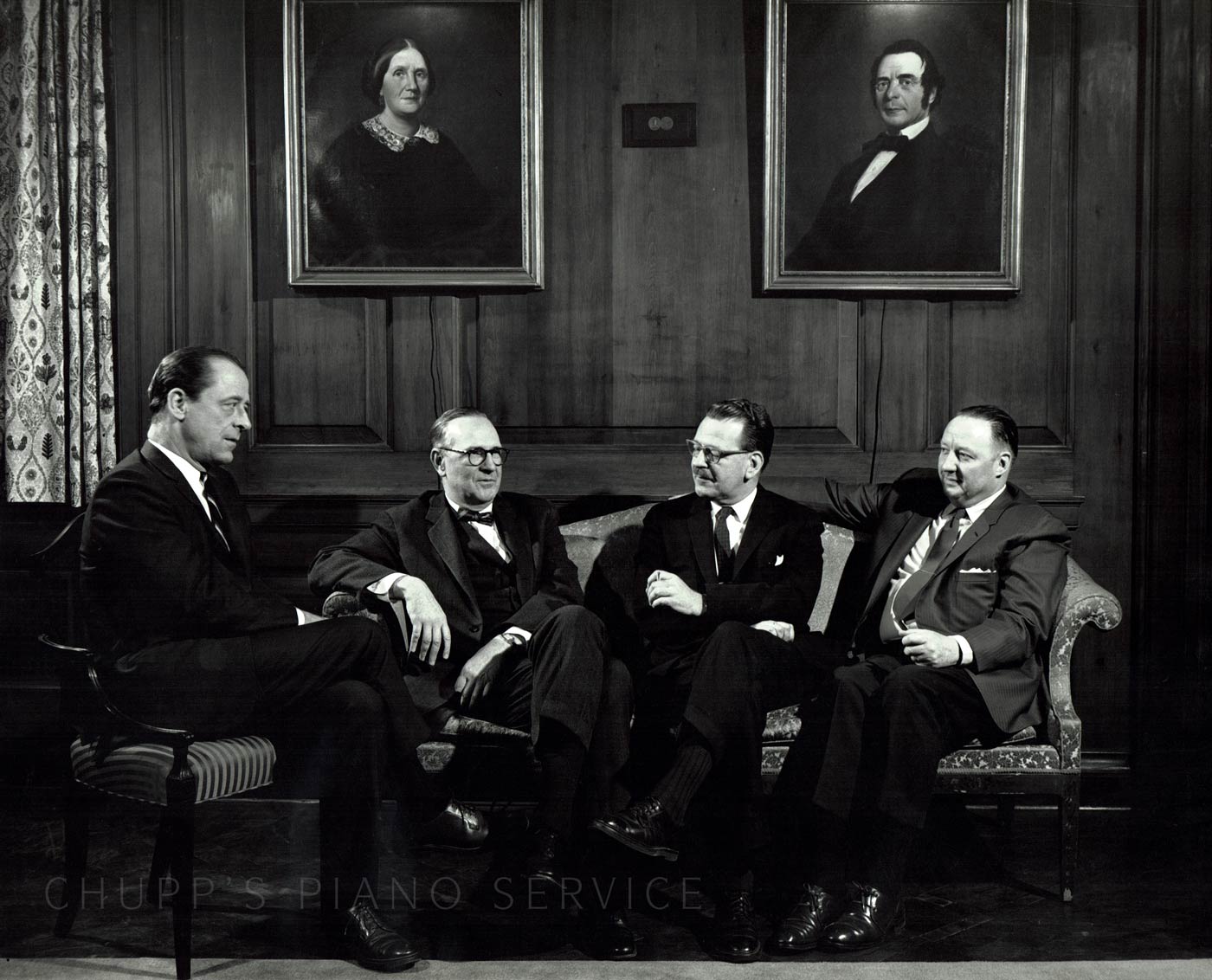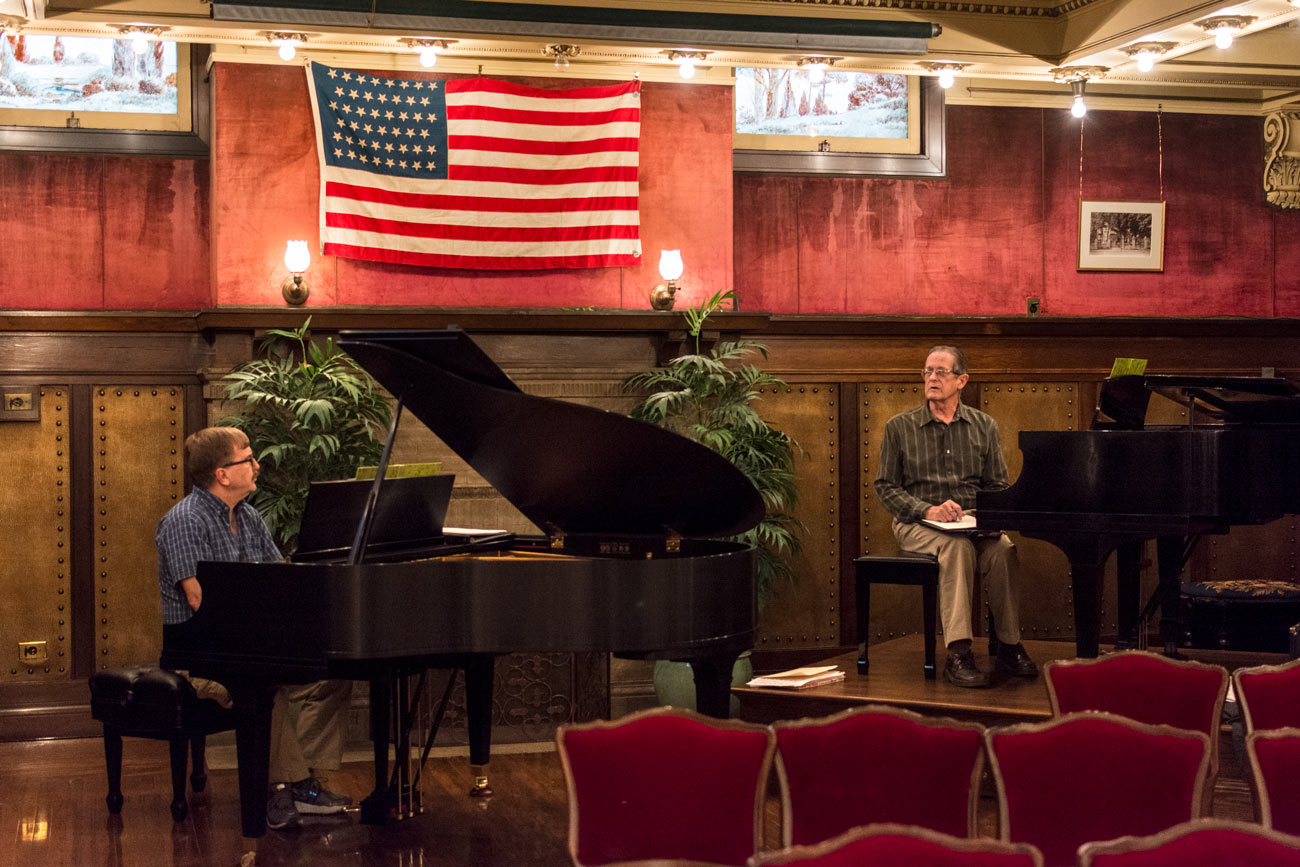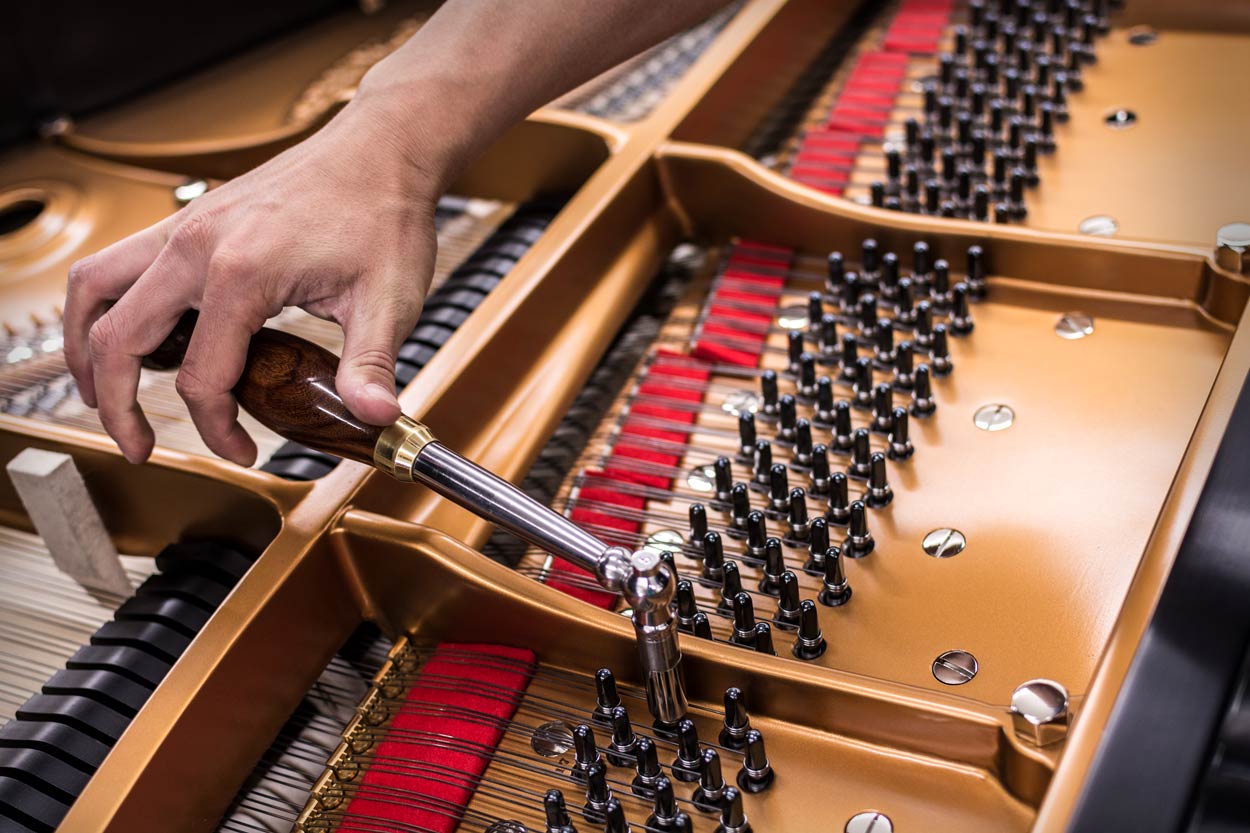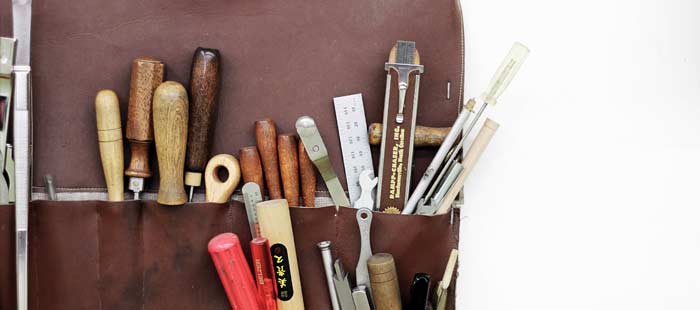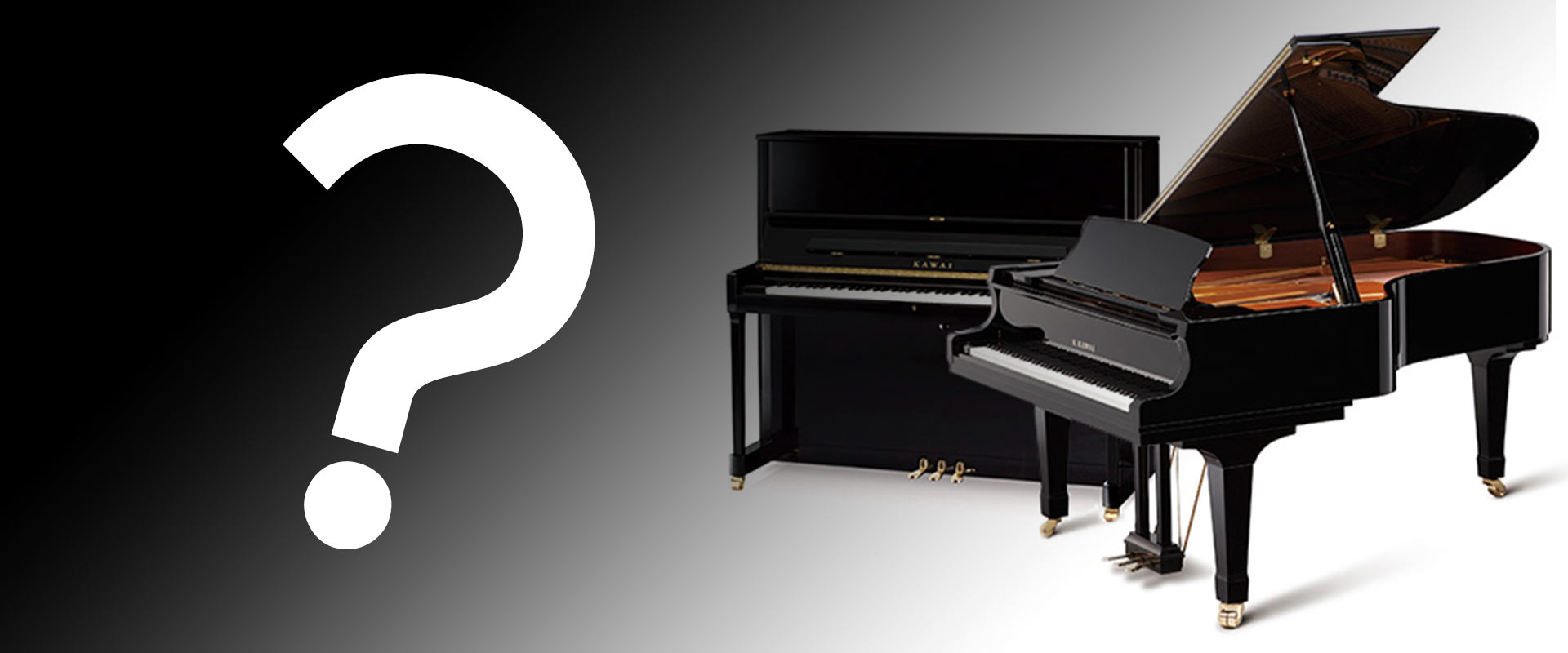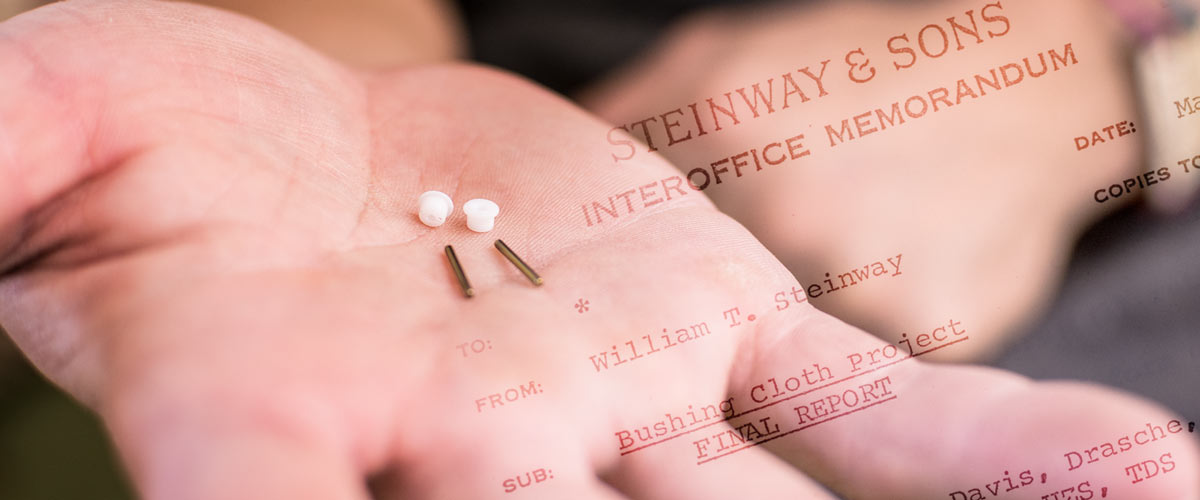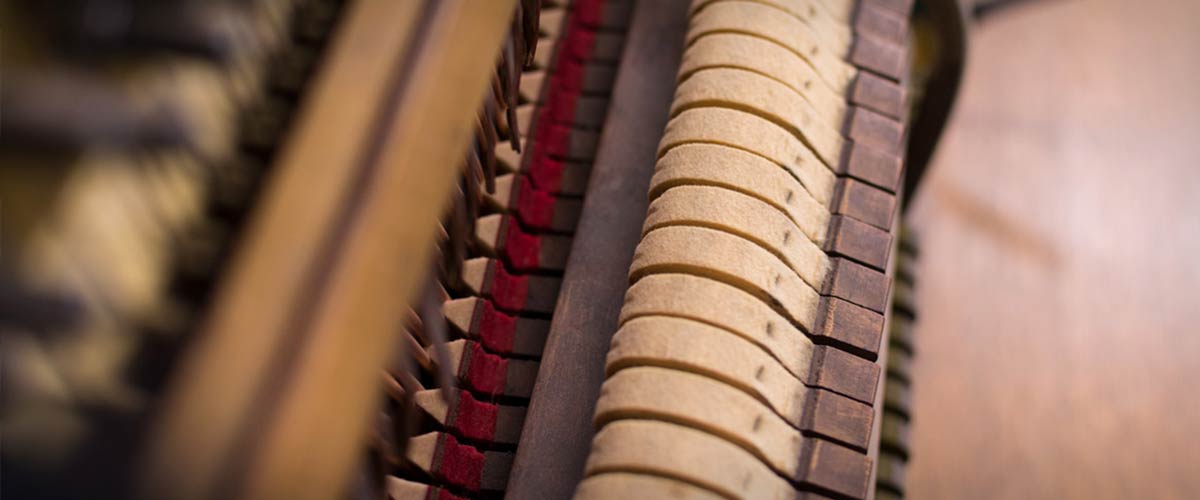What is a “European” Piano Rebuild? – Overseas Outsourcing in the World of American Vintage Piano Restoration
What’s the Difference Between an Upright or Grand Piano & Other Frequently Asked Questions
When History is Played Personal – A Few Things to Consider When Restoring The Family Piano
The Hamburg Steinway Factory – A Historic Report of Differences – ft. Excerpts from a Rare Report by William T. Steinway
An Historic Glimpse Into the 70's Hamburg Steinway Factory
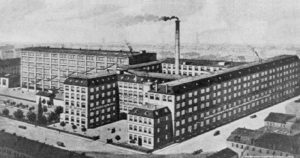 One of the most unique parts of the Steinway story, is the tail of two factories. Although with a name like Steinway (originally Steinweg), one could not be blamed for initially thinking that Steinway & Sons is a German company, transplanted to the United States. In fact, that is almost reversed. Founded in 1853 in the city of New York,Steinway & Sons was the brainchild of German immigrant Henry E. Steinway. Launching his new piano business into one of the most cutthroat and competitive businesses of his day, Henry and his offspring would quickly grow the company into one of the powerhouses of modern day music. As demand increased in the United States, demand increased overseas as well. The decision was made to open a factory overseas and the Steinway name returned to Germany - the City of Hamburg, to be exact. In 1880, C.F. Theodore and William Steinway founded the Hamburg Steinway Factory. A wholly owned venture, this new factory allowed them to avoid high import tariffs and allowed for easier distribution of their newly built pianos throughout the European market. Today, the Hamburg division continues to serve this purpose and most of the countries outside of North America are supplied with instruments crafted in Hamburg. Here in the United States, Hamburg Steinway pianos are often viewed as more 'exotic' and are known to posses a different tonal quality when compared to their New York factory brethren.
One of the most unique parts of the Steinway story, is the tail of two factories. Although with a name like Steinway (originally Steinweg), one could not be blamed for initially thinking that Steinway & Sons is a German company, transplanted to the United States. In fact, that is almost reversed. Founded in 1853 in the city of New York,Steinway & Sons was the brainchild of German immigrant Henry E. Steinway. Launching his new piano business into one of the most cutthroat and competitive businesses of his day, Henry and his offspring would quickly grow the company into one of the powerhouses of modern day music. As demand increased in the United States, demand increased overseas as well. The decision was made to open a factory overseas and the Steinway name returned to Germany - the City of Hamburg, to be exact. In 1880, C.F. Theodore and William Steinway founded the Hamburg Steinway Factory. A wholly owned venture, this new factory allowed them to avoid high import tariffs and allowed for easier distribution of their newly built pianos throughout the European market. Today, the Hamburg division continues to serve this purpose and most of the countries outside of North America are supplied with instruments crafted in Hamburg. Here in the United States, Hamburg Steinway pianos are often viewed as more 'exotic' and are known to posses a different tonal quality when compared to their New York factory brethren.
Why Should I Buy A Bigger Grand Piano & Other Frequently Asked Questions
Why should you consider springing for a larger piano? What do the pedals on a Steinway piano do? What about a 'free' upright piano? In today’s blog post, we cover a few of the piano-related questions we receive here at Chupp’s Piano Service.
What Is The Benefit of a Large Grand Piano?
Besides the amazing focal point that a large grand piano can give any room, there are a number of benefits that come with the purchase and use of a large grand piano over their smaller cousins. The first benefit you may notice when you begin to play is the superior level of control many large concert grands provide. Much of this can be traced back to the longer key sticks. What is a piano keystick? Traditionally crafted from a premium pine or spruce, the long wooden keys are capped with a keytop. (It is important to note that a piano key extends in length far beyond the small part at the front that is touched by the pianist.) Pianos of yesteryear boasted keytops of genuine ivory and ebony. Today, the most common materials are high-grade plastics and polymers. These materials are more environmentally friendly and less prone to cracking or yellowing. The larger key bed and action cavity space in a concert grand gives enough room for the length of the keys to be extended to their optimum length. The longer piano keys allow for greater precision and control over each note.Why Are My Piano Keys Sticking & Other Frequently Asked Questions
Why Are My Piano Keys Sticking?
Behind each ivory, ebony or plastic topped key stick resides almost every moving part in a piano. All of these moving parts creates the potential for annoying sticking and binding, causing notes not to function. There are a number of reasons this may occur and can usually be quickly diagnosed by a qualified piano technician. Here are a few of the most common reasons.
- Debris. The gaps between the keysticks allow for small debris to fall between them. Over time, this can cause keys to bind together. Each key pivots on metal pins. If the rail pins become dirty or filled with debris, this can cause keys to feel sluggish. With a grand piano, pencils and similar items can often fall between strings and into the piano's action. (This author has dealt with that a time or two on his personal piano...) The fix for this usually involves removing the action stack or keys to get to the issue, removing any junk and thoroughly cleaning the action. If possible, keep small items stored away from where they could accidentally fall into the piano's action cavity or between the key sticks.
- Humidity swings can cause wooden key sticks and action parts to expand and shrink, causing parts to bind. We highly recommend that you take steps to control the humidity levels within and around your piano. The best way to do so is to invest in either a whole room or whole house humidification control system. As a nice side benefit, this will also greatly increase the comfort level of your home. We also recommend the consideration of a Dampp Chaser Piano Life Saver System installed directly onto the piano. The combination of these steps will ensure that you receive the longest service and most enjoyment out of your musical instrument.
- Broken parts. There is a chance there may be broken action parts which are keeping your piano from functioning. Lost screws, flattened knuckles, broken wippens. These are just a few of the issues that may be causing your piano keys to jam or not return properly. Again, this would be an issue for your piano technician to diagnose and repair.
New York Steinways vs. Hamburg Steinways – a Tail of Two Factories
Steinway & Sons New York and Hamburg | What's the Difference?
Question: “What's the difference between Steinway pianos built at the company's New York Factory and their Hamburg Factory?"
An American Company
While Charles Dicken's novel A Tale of Two Cities dealt with the cities of Paris and London, this comparison deals with New York and Hamburg. Specifically, their shared role as the home for Steinway & Sons pianos. This unusual situation has resulted in key differences between the American and European variants of these legendary musical instruments.
Contrary to the belief of some, Steinway & Sons is not a European company and have always been an American company first and foremost. Founded by German immigrant Henry E. Steinway, the New York-based company grew quickly from its modest founding in 1853 to quickly become the leading piano maker in North America. This led to increased demand for their products in both the United States and around the world. As this demand for pianos grew, the decision was made to open a factory overseas and the Steinway name returned to Germany - the City of Hamburg, to be exact.
The Baldwin: The Story of a Piano Restoration – Ruthmere Museum & Chupp’s Pianos
Partnering With The Ruthmere to Restore Local History
This historic Baldwin Model M Baby Grand Piano was fully rebuilt by Chupp’s Piano Service. Built in 1938 at the Cincinnati Baldwin piano factory, this grand piano was a family heirloom of the Deputy family, the last residents of the historic Ruthmere Mansion in Elkhart, Indiana. (In fact, one of their family portraits at the museum shows the family sitting around this very piano.) The piano is believed to have been moved out of the mansion in 1969. Recently, the Deputy family generously donated the Baldwin piano to the Ruthmere Museum, returning it to its former home. This is the story of a historic piano’s full restoration. Producer/Shooter/Director: Benjamin Rogers - Music Written & Performed by Philip Balke - Special thanks to The Ruthmere Museum of Elkhart, IN.Why Do Pianos Go Out of Tune?
Why Pianos Slip Out of Tune
A piano is made up of thousands of individual parts. A dizzying number of components constructed of wood, metal, and cloth all combine to create one musical instrument. In one way, all acoustic pianos are equal - they require tuning. Today, the standard pitch to which pianos are tuned is A440. Here are some of the reasons your piano will slip out of tune.Question: Why do pianos go out of tune? What has the greatest affect on my piano's tuning stability?
- Humidity Swings: The biggest factor that affects a piano's stability of tuning are swings in humidity. Traditionally, a piano's pinblock, soundboard and bridges are all made of wood. Wood can be very susceptible to swings in humidity which cause the wood to expand and contract. Constant swelling and shrinking combined with the thousands of pounds of tension created by the strings, causes the piano to quickly slip out of tune.
- Maintaining Consistency: A humidity range between 40% and 50% is optimal for your acoustic piano. The best solution is to maintain a constant humidity level in your home by using a whole house or room humidification control system. We also highly recommend the use of a Dampp Chaser Piano Life Saver System installed on the instrument to help create a stable 'microenvironment' around and inside the piano. These systems are available for both upright and grand pianos.
How Much Does a Piano Weigh & Other Frequently Asked Questions
How much does a piano weigh?
The combination of thick pieces of lumber, the heavy cast iron plate (sometimes called a harp), and numerous other components make the piano one of the heaviest instruments on the market today. Pianos vary greatly in weight depending on their type and size. For example, a Steinway & Sons Model B which measures 6’11” in length weighs approx. 750 lbs. while smaller upright pianos such as consoles and spinets, usually weigh in the 300 to 500 lbs range.A Deal, or a ‘Steal’? – Choosing an Upright or Grand Piano for your Student
Question: My child is starting piano lessons. What kind of piano should I get for them? I found a free one on Craigslist and most of the keys still work. Could I start them on this piano until they get good enough to deserve a better one?
The selection of an instrument for your budding student is an important one. Students of the piano will spend many an hour practicing scales and building up to ever increasingly difficult pieces. A link should build between the artist and their instrument. This is why it is critical to select a piano that encourages them to sit down and play.
 Holding Your Student Back…
Holding Your Student Back…
Imagine someone beginning to learn a sport, say, baseball. One wouldn’t give the budding player a stick broken off from a nearby tree and tell them; ‘learn with this, and when you get really good we’ll give you a real bat!’ It is obvious that this would not be conducive to enjoyable learning and would impede progress. One would be tempted to simply quit when placed under this handicap.
Unfortunately, we see this far too often in the world of pianos. The difference between a fully functional, professional grade piano and the ‘Craigslist deals’ and cheap keyboards one often sees in us for practice is like day and night. Even budding pianists can tell the difference, even if they cannot express what exactly they are feeling.
Creating Frustration
Young students are much more perceptive to tonal quality and touch than many parents think. Many of the ‘free deals’ that can be found on Craigslist (and yes, even at some piano dealers) can be much more trouble than they are worth. A badly built and maintained piano may require much more repair and restoration work than is initially noticeable when examining the exterior. It is always recommended that you contact a qualified piano technician prior to considering the purchase of one of these used pianos. It can be incredibly frustrating to sit down at a barely functioning piano that has been badly maintained and attempt to bring some kind of discernable melody out of it. It is maddening for the professional; just imagine how frustrating it is for a beginning student. Sadly, we see this so often. It is no wonder that many students fail to stick with piano lessons. In terms of monetary value, a durable, high-performance instrument can and will help you and your student get the very most out of piano/music lessons. A well-built, properly maintained instrument will stay in regulation and in tune saving you money in service calls. Many music teachers also have minimum requirements for the student’s practice instrument – and with good reason!Teflon Bushings – The Steinway & Sons “Teflon Era”
Teflon Bushings in Steinway Pianos– The Failed Experiment
If there was one quality that marked the early days of Steinway & Sons, it was the family company’s inherent desire to invent, tweak and improve the quality of their pianos. This led to famous innovations and improvements to grand piano design that continues to be standard a century later. Almost all of the company’s patents were filed during these first years. The study of the lineage of the modern grand piano is a fascinating one, filled with stories of both success and failure. The 'Teflon Era' will forever remain an infamous time for Steinway & Sons, but one that forced the industry to adapt around new ideas and parts.
Increased Competition – Attempted Innovation
During the early 1960s, work began on another project that company leadership hoped would again boost the company’s reputation as a world leading instrument. Continued pressure from less expensive yet high-quality pianos from Japanese makers like Yamaha and Kawai began to push Steinway from their position as the North American piano king. (This battle between the ‘east and the west’ wages on even today. ) A number of their major American competitors were either long gone or in decline. A document provided to Chupp's Piano Service proves interesting. In a letter dated April 6th, 1979 to the late Ed Hendricks, a former Vice President of Marketing and owner of Hendricks’ Pianos in Chicago,....
Kawai Vs. Yamaha Pianos
Which Piano is Right for You: Yamaha Vs. Kawai?
Question: “I am considering both Yamaha and Kawai pianos and they seem similar. What are some of the differences?"
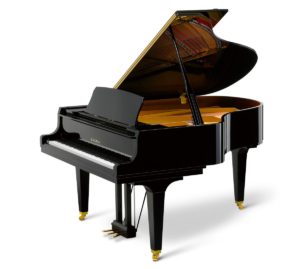 Yamaha pianos are often near the top of the list when pianists begin looking for a good piano. If you are looking at the purchase of a new Yamaha piano, the consideration of a piano manufactured by Kawai may be in your best interest. Founded in 1927 by Koichi Kawai, Kawai endured ninety years of history to become one of the leading piano makers in the world. They continue to produce high-quality pianos at a price point that is hard to beat—even for Yamaha.
Kawai and Yamaha pianos are often compared due to a number of similarities. They are both based in Japan and have decades of experience in the crafting of both upright and grand pianos. Their factories are some of the most advanced in the world and they pride themselves on consistency. Both of the companies build an incredibly high number of pianos each year. This high production capacity combined with truly good quality has made both brands the choice of musicians, students and piano lovers around the globe. That being said, Kawai has some significant advantages over Yamaha pianos, which has allowed them to be the leader of innovation in the piano industry while maintaining competitive pricing for their high-quality pianos. So what separates Kawai pianos from Yamaha pianos?
Yamaha pianos are often near the top of the list when pianists begin looking for a good piano. If you are looking at the purchase of a new Yamaha piano, the consideration of a piano manufactured by Kawai may be in your best interest. Founded in 1927 by Koichi Kawai, Kawai endured ninety years of history to become one of the leading piano makers in the world. They continue to produce high-quality pianos at a price point that is hard to beat—even for Yamaha.
Kawai and Yamaha pianos are often compared due to a number of similarities. They are both based in Japan and have decades of experience in the crafting of both upright and grand pianos. Their factories are some of the most advanced in the world and they pride themselves on consistency. Both of the companies build an incredibly high number of pianos each year. This high production capacity combined with truly good quality has made both brands the choice of musicians, students and piano lovers around the globe. That being said, Kawai has some significant advantages over Yamaha pianos, which has allowed them to be the leader of innovation in the piano industry while maintaining competitive pricing for their high-quality pianos. So what separates Kawai pianos from Yamaha pianos?
1: Higher Stability
Kawai pianos, especially their grand pianos, have undergone steady and constant improvements in their design and workmanship over the years. Today, Kawai pianos come standard with their industry leading Millennium III ABS-Carbon Fiber action. Several decades ago, Kawai made the bold decision to begin the production of piano action components utilizing ABS-Styran. This change from wood was shocking to the traditional piano industry and initially was widely dismissed. The years since have proven the stability and accuracy of their new parts, which today, are widely accepted and credited by the piano industry. In fact, America's Mason & Hamlin through their subsidiary Wessel, Nickel and Gross have recently switched to similar, ABS components with raving reviews. Currently, the new Millennium III action parts are made of ABS infused with Carbon Fiber for added strength and rigidity. These actions are utilized on both Kawai grand and upright pianos.There Ain’t No Such Thing As a Free Old Upright Piano (Most of the Time)
Why A ‘Free’ Upright Piano Is Not Always Free
“Free piano! Plays great! *just needs tuned. You move. Bring lots of friends, this thing is heavy...”Ads similar to this example, fill newspapers and local Craigslist listings all over the country. At first, this can sound like a deal of a lifetime. “A free vintage piano and all I need to do is pick it up and have tuned!” Unfortunately, these apparent deals can quickly turn into money pits that leave you with a lackluster, barely functioning instrument that cannot be improved without an inordinate amount of time and money. There are a few reasons that these pianos are often left in homes when they are sold and you can find free pianos abound on the internet. Below we will go over a the top reasons you should think twice before undertaking the inconvenience of acquiring a free/cheap piano.

